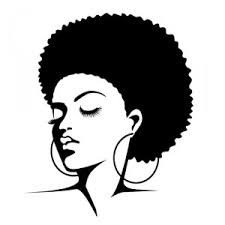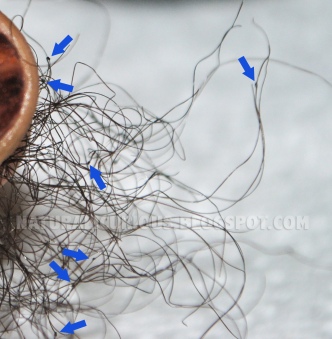
- WHAT IS HAIR TEXTURE?
Hair texture refers to the different types of hair categorized by their unique curl patterns. These unique curl patterns have been incorporated in hair typing systems.
- WHY IS KNOWING YOUR HAIR TEXTURE IMPORTANT?
- Enables you to better understand your hair needs.
- Enables you to identify your hair type.
- Enables you to choose and purchase the right products for your hair type.
- Saves time and money.
- Enables you to manage and take proper care of your hair.
- WHAT IS A HAIR TYPING SYSTEM
Hair Typing Systems were created to help you understand your hair type and its characteristics to enable you to effectively manage and maintain your hair.
There are basically two (2) common types of hair typing systems as follows:-
- ANDRE WALKER HAIR TYPING SYSTEM
Andre Walker created the original hair typing system which is used by many natural hair bloggers and which is mentioned on many natural hair community websites.
Andre Walker’s hair typing system classifies hair into the following categories:-
TYPE 1
- Straight hair
- Ranging from 1A – 1C
- Fine and Fragile to Coarse and thin
- This type of hair is curl resistant
TYPE 2
- Wavy hair
- Ranging from 2A – 2C
- Fine and Thin to Coarse and Frizzy
TYPE 3
- Curly hair
- Ranging from 3A – 3B
- Loose curls to corkscrew curls
TYPE 4
- Kinky hair
- Ranging from 4A – 4B
- Tight coils to z angled coils
It should be noted that your hair can have a combination of different curl patterns with one dominant curl pattern.
On some natural hair websites and communities you may have come across hair types such as 3c and 4c which are not mentioned in the Andre Walker’s hair typing system.
These two (2) additional hair types were created based on naturals who don’t fall into the 3b or 4b categories. The 3c and 4c hair types are used by natural hair websites such as naturallycurly.com.
- B) L.O.I.S AFRICAN AMERICAN NATURAL TEXTURE TYPING SYSTEM
L.O.I.S. African American Natural Texture Typing System is another popular hair typing system used by many natural hair bloggers, websites and communities.
Focuses on hair texture as well as hair density and is a bit more complex as compared to the Andre Walker Hair Typing System.
3C HAIR CHARACTERICS
- Curls are tightly and closely drawn together
- Curls are similar to a corkscrew
- Curls are more coarser as compared to 3a and 3b hair types
4C HAIR CHARACTERICS
- Coils have a ‘z’ shaped pattern
- Coils are tightly kinked compared to 4a and 4b hair types
- Coils can shrink up to 50% or more of their natural length
- Coils have less definition and may require the use of styling aids in order for the coils to clump together.
- Hair strands range from fine/thin to wiry/coarse.
PATTERN
This particular system is based around the letters L.O.I.S which stands for:-
L – Bend, the hair has bends, right angles and folds with little to no curl. You are daughter L.
O – Curl, If the stand is rolled up into the shape of one or several zero, like a spiral or corkscrew. You are daughter O.
I – Straight, If the hair lies mostly flat with no distinctive curve or bend. You are daughter I.
S – Wave, If the hair strand looks like a wavy line with hills and valleys. You are daughter S.
TEXTURE
THREADY – Low sheen, high shine, low frizz
WIRY – Sparkly sheen, low shine, low frizz
COTTONY – Low sheen, low shine, high frizz
SPONGY – High sheen, low shine, high frizz
SILKY – Low sheen, high shine, low frizz
STRANDS
- THICK
- MEDIUM
- THIN
ADDITIONAL INFO:-
SHINE – refers to hair that reflects light along its surface.
SHEEN – refers to hair that sparkles as if filled with light.
It should be noted that your hair can have a combination of different patterns with one dominant pattern.
As always happy, healthy hair journey!
Naturalkinkstrinis2



